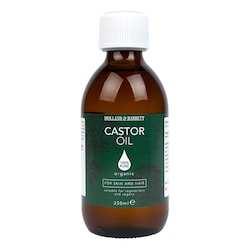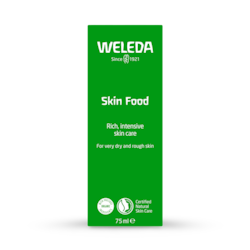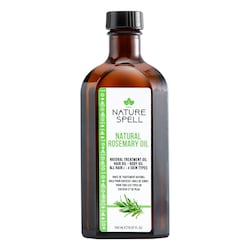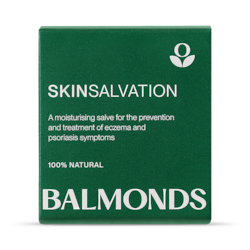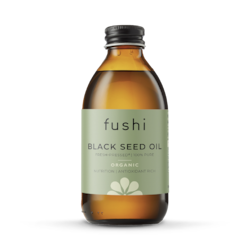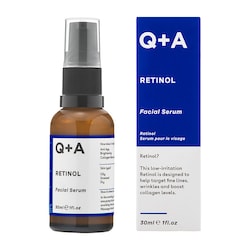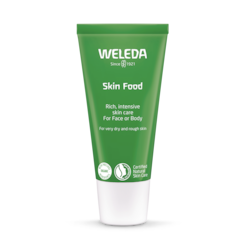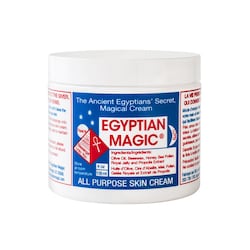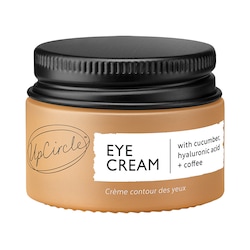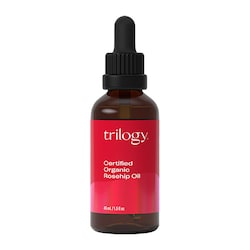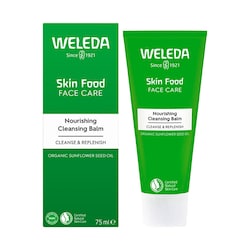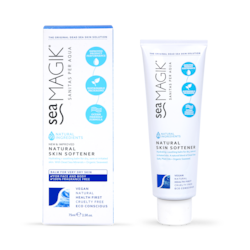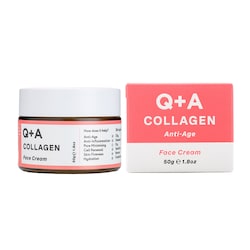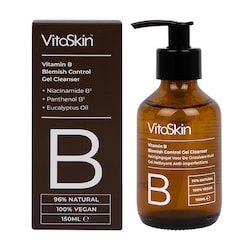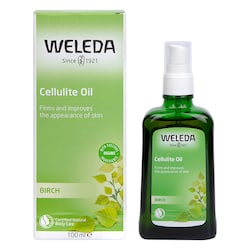20% off £30
How to get rid of stretch marks: Do creams work?

Is an expensive stretch mark cream the key to getting rid of stretch marks?
Stretch marks are common and few people escape these lines completely. They’re a normal part of puberty and pregnancy and also appear during many other times in your life. However, whilst some people wear their stripes with pride, you might feel more self-conscious.
When it comes to how to get rid of stretch marks, there are all sorts of treatments and creams that promise to make your marks disappear. However, the research to support their claims is far from conclusive…
Before you invest in a stretch mark treatment or another cream, we want you to understand what’s causing these marks so you can make educated decisions about if and how you tackle them.
What are stretch marks?
Stretch marks are lines or marks that develop when your skin is stretched too far.
These marks tend to vary in colour. Often, they will start out pink, red, brown or purple, and fade to silver over time. The most popular locations for stretch marks are on the tummy, chest, upper arms, legs, bottom, hips and back.
When do you get stretch marks?
It’s important to understand what causes stretch marks to fully appreciate why they may develop.
When skin stretches too much, too rapidly, the elastic fibres and collagen beneath the surface over-extend and can even break. Once these tissues are over-stretched or damaged, they lose their elasticity.
This means they don't bounce back. On the surface, this shows as stretch marks.
Stretch marks can appear at various stages in your life. Whether due to adolescent growth spurts, pregnancy, bulking up through bodybuilding or weight gain, they’re a visible sign of skin structure damage.
Summary
- Stretch marks are lines or marks that are caused when your skin is stretched
- They form because of skin damage – the elastic fibres and collagen underneath the skin surface lose their elasticity, and may even break
What do stretch marks look like?
No stretch marks look the same. They differ from person-to-person and from stretch mark-to-stretch mark. They can develop on different parts of your body too. For instance you can get:
- Purple stretch marks – aren’t too dissimilar to the shade of a bruise, but look like purple streaks or lines rather than patches.
- Red stretch marks – can look painful and bright red or a less vibrant shade or red; almost like the fresh skin underneath a scab.
- Deep stretch marks – some stretch marks can look deeper than others, making them almost welt-like.
- Dark stretch marks – some stretch marks can be darker than others, for example, brownier in colour, and even, black. Some can look grey/silvery.
- Black stretch marks – depending on your skin type and colour, your stretch marks may look black.
- Stretch marks on arms – it’s not uncommon for stretch marks to develop on people’s upper arms; it’s where the skin tends to expand and contract more.
- Stretch marks on belly – the stomach area is also a common place for people to get stretch marks, particularly pregnant women.
- Back stretch marks – it’s possible for stretch marks to form along the lower back, especially during puberty or pregnancy if rapid growth spurts are experienced.
Summary
- Everybody’s stretch marks look different – they can be longer, shorter, deeper, finer and vary in colour
- Stretch mark colours range from red and pink, to brown, purple, silver and black
Can you get stretch marks after losing weight?
Stretch marks can happen if people lose weight too rapidly and if they put it on too rapidly too. If you’re planning on losing weight, doing it slowly (no more than 1% of your body weight a week) can reportedly help reduce the likelihood of stretch marks developing.1
Do stretch marks fade on their own?
First of all, you can expect stretch marks to change and fade over time. Without treatment.
These lines typically start off darker and get lighter and less noticeable over time.
So, once the reasons for ‘stretching’ settle, you may start to see a reduction in the appearance of any marks naturally.
Do stretch marks go away when you lose weight?
It can happen, but it’s not guaranteed that stretch marks will fade on their own, regardless of if they were formed by losing weight.2
Summary
- It’s possible for stretch marks to appear if you’ve lost weight rapidly due to the sudden change in the body/skin
- Some, not all, stretch marks can fade over time
Where can stretch marks appear?
Most people tend to get stretch marks on their tummy, chest, upper arms, legs, bottom, hips or back.3
They may develop in just one or multiple places, and at different times throughout your life too.
8 causes of stretch marks
According to the NHS, sudden growth or weight gain are the two main stretch mark causes. You may be more prone to getting them if you: 4
- Are pregnant – women are most likely to develop stretch marks if their weight gain is more than average during pregnancy. 5
- Are going through puberty – puberty stretch marks, such as teenage stretch marks on back and leg stretch marks can happen during growth spurts.
- Lose or gain weight rapidly – which can impact the skin’s natural make-up due to excessive contraction and expansion of the skin.
- Are overweight – excess weight can stretch the skin in areas, such as the stomach, thighs and arms, leading to stretch marks in and around these areas.
- Use certain steroid creams or tablets – that may thin or damage the skin’s delicate layers.
- Have a history of stretch marks in your family – they can be genetically passed down.
- Bulk up fast – rapid muscle mass can lead to stretch marks because the skin is stretched to accommodate the additional muscle. 6
- Have a particular medical condition – that may cause stretch marks, such as Cushing's syndrome or Marfan syndrome. 7
When am I most likely to get stretch marks?
Stretch marks are hard to avoid because they can happen for so many reasons at various times in your life. A few things that can make you more likely to develop stretch marks are:
- Puberty growth spurts
- Pregnancy
- Gaining (or losing) weight quickly
- Being overweight
- Certain medication (e.g. steroid creams and tablets)
So, is it only a matter of time before stretch marks appear?
It's impossible to say. Whether you get stretch marks or not, is largely influenced by your genes.
As a general rule, if your parents have them, you’re more likely to get them too.
Preventing stretch marks isn’t always possible but maintaining a healthy, consistent weight can help.
Summary
- Most people tend to get stretch marks on their tummy, chest, upper arms, legs, bottom, hips or back
- They can be caused by any number of things – puberty growth spurts, pregnancy, sudden weight loss or gain and certain medication, and many more reasons
How to get rid of stretch marks
A stretch mark is a type of scar, so for some people, it's a permanent thing that may fade over time. Stretch mark treatments do exist, with some reportedly being more effective than others.
They include stretch mark creams, lotions and gels, as well as home remedies, such as almond oil, cocoa butter or olive oil. The result, if any, differs from person-to-person.8
8 ways to remove stretch marks
Ok, so we’ve established it’s not possible to remove stretch marks, but you can try to reduce stretch marks (the appearance of them) with methods such as:
- Retinoic acid (also referred to as tretinoin) creams or hyaluronic acid – may help with skin tone and texture and overall appearance if applied to new stretch marks.9
- Microdermabrasion – that works by removing a thin layer of skin.
- Dry brushing – may help topical stretch mark creams and gels work better by removing any dead skin cells, enabling the products to be better absorbed by the skin.10
- Microneedling – involves injecting tiny needles into the skin to stimulate collagen growth.11
- Applying Argan oil – which is enriched with Vitamin E and therefore may boost skin elasticity and heal broken tissue over time.12
- Using lemon - lemon juice is known for its natural bleaching properties, so may help reduce the appearance of stretch marks. Apply fresh lemon juice or rub a lemon wedge on the area daily. 13
- Applying egg whites – eggs are a skin superfood because they’re high in protein and amino acids. When applied to stretch marks, egg white may help lighten marks and tighten skin.14
- Using olive oil – olive oil is an excellent moisturiser that’s full of antioxidants and other nutrients that may help manage skin damage. Applying cold-pressed olive oil may help fade the appearance of stretch marks over time.15
Should I hold off on buying stretch mark cream?
Consistent use of super-moisturising formulations may enhance the appearance of your skin.
Although this won’t prevent or remove stretch marks, it may help improve your skin tone and general appearance of your complexion.
However, a specific stretch mark cream may not be necessary. Some research suggests standard moisturisers could be just as effective.
Summary
- You cannot remove stretch marks
- But there are certain things you can do, such as using specialist creams, oils or gels, microneedling or natural remedies to reduce the appearance of them
To sum things up
Many skincare products and treatments claim to reduce the appearance of stretch marks dramatically and more rapidly. But there's very little evidence to suggest any form of stretch mark removal will actually work.
There are some treatments that may help make stretch marks look better, but they will not get rid of them.
When you consider stretch marks are the result of damage to collagen and fibre supporting your skin, you can see how difficult it would be for a topical cream to repair this damage.
Realistically, a cream is unlikely to repair this fibrous support structure.
Whether you gain stretch marks during your teenage years or through pregnancy, it’s important to remember one thing - stretch marks are completely normal.
Most of us have them and many of us choose to wear them with pride.
Last updated: 10 June 2021
- https://www.menshealth.com/health/a28846875/stretch-marks-weight-loss/
- https://www.verywellfit.com/just-the-faqs-stretch-marks-3496305
- https://www.nhs.uk/conditions/stretch-marks/
- https://www.nhs.uk/conditions/stretch-marks/
- https://www.nhs.uk/pregnancy/related-conditions/common-symptoms/stretch-marks/
- https://www.menshealth.com/health/a28846875/stretch-marks-weight-loss/
- https://www.mayoclinic.org/diseases-conditions/stretch-marks/symptoms-causes/syc-20351139
- https://www.aad.org/public/cosmetic/scars-stretch-marks/stretch-marks-why-appear
- https://www.nhs.uk/conditions/stretch-marks/
- https://www.cosmopolitan.com/style-beauty/beauty/g19855100/stretch-marks-removal-treatments/
- https://www.mayoclinic.org/diseases-conditions/stretch-marks/diagnosis-treatment/drc-20351144
- https://www.femina.in/beauty/skin/causes-and-home-remedies-for-stretch-marks-62446.html
- https://www.femina.in/beauty/skin/causes-and-home-remedies-for-stretch-marks-62446.html
- https://www.femina.in/beauty/skin/causes-and-home-remedies-for-stretch-marks-62446.html
- https://www.femina.in/beauty/skin/causes-and-home-remedies-for-stretch-marks-62446.html


